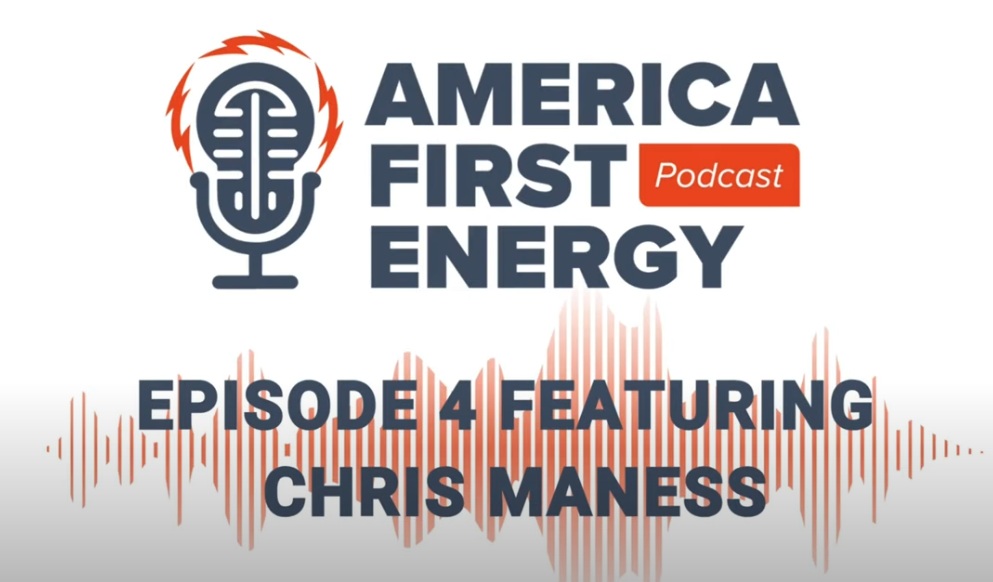|
|
|
Happy Friday!
May 9, 2025
|
|
|
|
We hope that you all have been able to appreciate the open forum surrounding solar energy and initiatives—we are so grateful to the communities and people that engage with us, and so, Energy Right is spotlighting our most recent and fourth episode of the podcast, America First Energy.
|
|
|
|
|
|
|
|
Every Megawatt Matters with Chairman Chris Maness
|
 |
|
|
|
This week on the America First Energy Podcast, co-host Ben Wilson sits down with Chris Maness, Chairman of the Scott County Board of Supervisors, for a grounded and energizing conversation about what it means to lead on energy in Southwest Virginia. A native of the region and longtime public servant, Chairman Maness shares why he believes smart, forward-thinking development, including the solar sector, is key to unlocking real economic opportunity for rural communities.
Too often, discussions around energy get bogged down by misinformation and misconceptions. But this episode offers something different: a clear-eyed look at what’s working, what communities need, and why every megawatt really does matter. From job growth and tax revenue to strengthening local infrastructure, Chairman Maness makes a compelling case for a practical, all-of-the-above approach that puts people first.
At Energy Right, these are the kinds of conversations we believe in—honest, locally rooted, and focused on the future. When local leaders step up to engage, listen, and lead, it makes a difference. We hope you’ll tune in, share it with other folks, and stay part of this ongoing dialogue about what it looks like to build a stronger energy future for the Commonwealth.
Episode 4 is available now through our YouTube page and Spotify links below.
|
|
|
|
|
|
|
|
|
|
|
|
Solar Rights, Local Opposition, and the Road Ahead in Virginia
|
|
|
|
|
Earlier this year, Arizona State University law professor Troy Rule published an article that zeroed in on a central challenge facing clean energy advocates: the growing disconnect between the nation’s need for utility-scale solar and an increase in local resistance—particularly in rural communities. His call for “solar rights legislation” to protect landowners’ ability to host solar on their property resonates strongly in Virginia, where project siting and permitting continue to face friction. This tension took center stage during the 2025 General Assembly session and will likely shape legislative priorities again in 2026.
Rule’s framing helps spotlight an often-overlooked dynamic: at its core, solar siting is not just about energy—it’s about governance, land use, and who gets to decide what happens on private property. Local bans and moratoriums may appear procedural, but they often carry broader implications for economic opportunity and energy access. That’s why state-level leadership is essential, not to override local voices, but to provide consistency and protect the rights of landowners seeking to contribute in any way they choose.
As we’ve seen more communities begin to support responsible solar development, we’ve seen firsthand how vital early engagement, education, and trust-building are to long-term success. The months ahead will bring new challenges—but also new chances to reinforce the value of community-centered development that upholds the values and promotes the economy. With the right tools, policies, and conversations in place, Virginia can move forward with clean energy in a way that reflects more than just the sun.
|
|
|
|
|
|
|
|
|
|
|
|
This week our team went to Carroll, Dickenson, Franklin, and Russell Counties.
|
|
|
|
|
|
|
 |
|
Lunenburg County
|
|
|
|
Dylan Taylor of Energy Right was in Lunenburg County, attending a public hearing that was weighing the newly proposed solar ordinances. The Board deferred for further conversation.
|
|
|
|
|
|
|
|
Farmers are making bank harvesting a new crop: Solar energy
Matt Simon – Canary Media
|
|
A new UC Davis study offers compelling insights into how solar development and agriculture can thrive together. Researchers examined six agrivoltaics sites across California and found that integrating solar panels with grazing or crop production can improve soil moisture retention, crop resilience, and land use efficiency. While challenges remain—such as irrigation and equipment access—the findings support a growing case for thoughtful dual-use strategies that benefit both clean energy and working farms.
|
|
|
|
|
|
|
|
|
|
NEXT WEEK
We’ll be back at Franklin County and Scott County to start!
|
|
|
|
|
|
|
|
|
|
A new dashboard from Environment America shows how far we’ve come—renewables now make up 19% of U.S. electricity, triple 2015 levels. Even Southeastern states like Virginia are seeing record solar growth.
|
|
|
|
|
|
|

